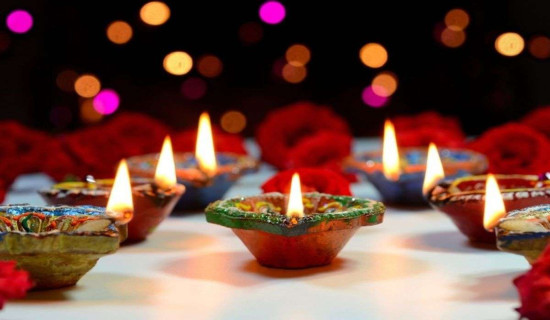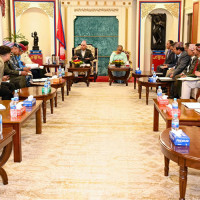- Sunday, 19 October 2025
Myths, misconceptions surrounding Goddess Kumari
By Bidikshan Soni,Kathmandu, June 3: Amid the dexterously carved windows of Hanuman Dhoka, where centuries-old rituals still breathe among stones and wood, the tradition of Kumari, Nepal’s Living Goddess, is often revered yet misunderstood. Celebrated as the human incarnation of Taleju, the protective goddess once worshipped by Malla kings, the Kumari stands at the heart of one of Nepal’s indigenous spiritual traditions. But around her divinity swirl layers of half-truths, rumours, and deeply entrenched misconceptions.
One of the most widespread beliefs is that the Kumari is a prisoner inside the Kumari Ghar, cut off from the world and deprived of a normal childhood. Gautam Shakya, the caretaker of the Royal Kumari at Hanuman Dhoka, firmly dismisses this misconception.
“People often think the Kumari is a prisoner,” Shakya said, “but that is far from the truth.” While her public appearances are limited to ceremonial occasions and certain ritual restrictions do apply, such as the belief that her feet should not touch the ground outside these events, her life inside the Kumari Ghar is not one of confinement.
She studies, plays, and interacts freely within the household, surrounded by family and caretakers. Former Kumari Matina Shakya, who served from 2008 to 2017, rejected the imprisonment narrative. “It wasn’t like I was locked up. I had friends, I had my toys. It was just a different kind of childhood,” she said.
Kumari’s daily life, though shaped by sacred responsibilities, unfolds in a rhythm of affection, routine, and cultural pride rather than isolation.
Another enduring myth claims that former Kumaris struggle to reintegrate into society. However, Gautam Shakya highlighted that many have gone on to lead fulfilling lives, with several pursuing higher education, careers, and even marriage. The tradition has adapted over time to include access to formal education and emotional support, easing the transition once a Kumari’s tenure comes to an end.
Among the most persistent misconceptions is the belief that a former Kumari cannot marry, or that if she does, her husband will die. On this point, Gautam Shakya is unambiguous.
“No, that’s one of the most frustrating misconceptions,” he said. “People say if a Kumari gets married, her husband will die, but that’s completely false. In fact, some former Kumaris have married and are living happily. In fact, it’s considered lucky to marry a Kumari, not a curse.”
His words directly challenge a myth rooted more in ignorance and superstition than in truth. In reality, former Kumaris have married and raised families, carrying the dignity of their past with the normalcy of everyday life. This belief, according to him, reflects a broader misunderstanding of what the Kumari tradition represents: reverence for feminine power, not fear of it.
Additionally, some view the Kumari practice as oppressive or patriarchal, an outdated relic of feudal devotion. Yet those closest to the tradition see it differently. Gautam Shakya emphasised that the Kumari is worshipped not because she is weak, but because she is powerful. The tradition itself is a convergence of Hindu and Buddhist philosophy, representing purity, protection, and divine presence.
Criticism, especially from outsiders, often stems from observing rituals without understanding the cultural and spiritual depth behind them. While reforms are ongoing to ensure the Kumari’s rights and education are secured, unwillingness on part of the state to offer adequate financial assistance risk erasing a living piece of Nepal’s rich heritage.
“The Kumari tradition is evolving,” he affirmed. “People must understand it first before judging it.”
Behind the silent windows of the Kumari Ghar lives a child, a symbol, and a sacred presence. But behind the tradition live centuries of faith, care, and stories misread by the modern gaze. The Kumari is not a figure to be pitied or feared, instead she is to be understood and loved.
(Soni is an intern at TRN)







-square-thumb.jpg)








